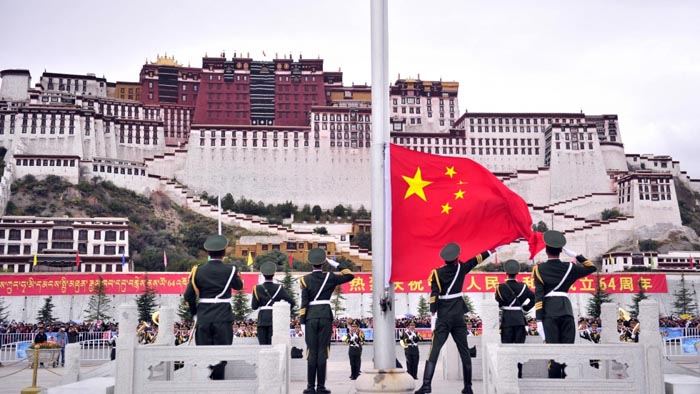
(TibetanReview.net, Sep05’20) – In a move to further assimilate Tibet and boost internal security and border strength amid increased border tension with India, China has embarked on a plan to spend more than 1 trillion yuan ($146 billion) to accelerate infrastructure investment in occupied Tibet, reported Reuters Sep 4, citing three sources familiar with the matter. The fund will be spend on new as well as previously announced projects, including the Sichuan-Tibet railway project and the planned Nepal and Tibet railway line.
During his address to the seventh Central Symposium on Tibet Work over Aug 28-29 held in Beijing, President Xi Jinping said a number of major infrastructure projects and public facilities would be completed, including the Sichuan-Tibet Railway project.
The construction plans include the completion of the geologically highly challenging middle section of a high-elevation Sichuan-Tibet railway link, a railway line between Nepal and Tibet that has remained in the planning stages, and a newly planned dry port in the Tibet Autonomous Region, the report cited the sources, who had declined to be identified, as saying.
While it was not immediately clear how much of the targeted spending was new, or over how many years it would be invested, two of the sources have said construction on the most difficult section of the Sichuan-Tibet railway – linking Sichuan’s capital Chengdu with Lhasa – will begin in coming weeks.
While sections of the railway in both occupied Tibet and China have been under construction over the past several years, with that in China being even already under operation, there has been no previous report about approval having been given for building the most challenging 270 billion yuan section of the railway, notably the segment linking Sichuan’s Ya’an city with Nyingchi (Tibetan: Nyingtri) in southeastern Tibet near the border with India.
The report noted that Beijing also wanted to push ahead with the Tibet-Nepal Railway linking Kathmandu with Shigatse, the second-largest city in Tibet, which was among a number of bilateral deals signed in 2018 between Nepal and China, but had yet to gain much traction.
Beijing has long aimed to build a high-speed rail network to make Tibet more accessible from China’s inland provinces, and it plans to improve or extend railways being planned or constructed that connect it with other parts of China, the report cited two of the sources as saying.
These may be in tune with China’s announcement of plans last month to expand the country’s railway network by one-third over the next 15 years.
Within Tibet, the planned spending covers the revamp and expansion of highways, roads and scenic spots, two of the sources were cited as saying.





